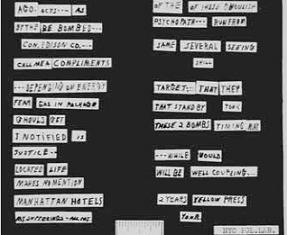The Mad Bomber of New York (27 page)

“Oh yes,” replied Metesky. “I worried about you.” He hesitated, and then continued sternly, “But those monsters at 4 Irving Place were to blame.”
Schmitt peered intently at Metesky, realizing that his attempts at reasoning were futile. “George,” he began, “We know you made the bombs. Are there any more in the house? Your sisters are still there and if anything happens to them, it will be on your head.”
Metesky's smile transformed into a deep frown. “You didn't find them, did you?” he said.
“Find what, George?”
Then, like a child playfully giving himself up in a game of hide-and-seek, Metesky calmly explained to Detective Schmitt where his cache of bomb-making materials could be found.
A short time later Schmitt and four other New York detectives were on their backs in the basement of Metesky's Waterbury home, peering with flashlights into the dark recess behind two soapstone set tubs and the gray concrete wall. Anna and Mae had continued to protest their brother's innocence to several reporters who had called on them earlier that morning, and now with the two sisters prattling in his ear, one of the detectives reached a bare arm into the space, probed the area with his hand, and seconds later murmured, in a straining voice, that he had found something. Then, one by one, like the birth of a litter, he produced red wool sock after red wool sockâfour in allâstuffed with four pipe couplings of various lengths with corresponding plugs, three shock-resistant wristwatches, five flashlight bulbs, two springs, three containers of smokeless powder, and a horde of various other bomb-making supplies. Detective Schmitt would later certify to Captain Finney and eventually to the criminal courts of New York City that “the items [taken from the Metesky home] are the component parts used in the construction of an infernal machine known as, âPipe Bomb.' Further examination and comparison of these items and the workmanship and tools involved causes [me] to form the opinion that they are similar to the component parts recovered at various locations in New York City . . . between March 16, 1954 to December 27, 1956, inclusive.”

At daybreak, Metesky was led by a bevy of detectives downstairs to the headquarters booking desk, where he signed a stenographic transcript of his interrogation and was formally booked and arrested for violation of Connecticut's explosives statute, pending possible extradition and further charges from New York City. He was greeted at the desk with a barrage of cameramen and news reporters from state, metropolitan, and national papers and wire services, who clamored for a photograph of the Mad Bomber. That afternoon, the smiling face of George Metesky appeared on television screens and the front pages of newspapers from New York to San Francisco. “[T]he face might have been that of a successful political candidate or a winner of a Nobel Prize,” later reflected Dr. Brussel, who delighted at news of the arrest. “Metesky was smiling . . . No, not smiling:
beaming . . .
He shouted cheerful greetings to the crowds who gathered . . . Under one arm he carried a neatly wrapped brown-paper parcel containing a change of underwear. It was as though he were going on a vacation. He seemed to be enjoying every minute of it.”
For Commissioner Kennedy and the New York City Police Department, however, the controversy was just beginning.

George Metesky, the Mad Bomber of New York.
Courtesy Library of Congress, Prints & Photographs Division,
New York World Telegram & Sun
Newspaper Photograph Collection.
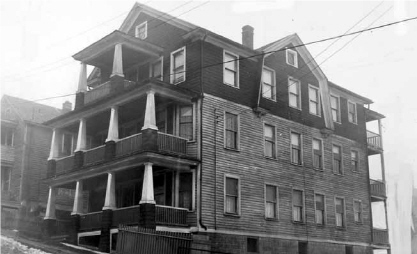
17 Fourth Street, Waterbury, Connecticutâthe Metesky home. “The house was not loved,” wrote one observer. “It was only maintained.”
Courtesy Library of Congress, Prints & Photographs Division,
New York World Telegram & Sun
Newspaper Photograph Collection.
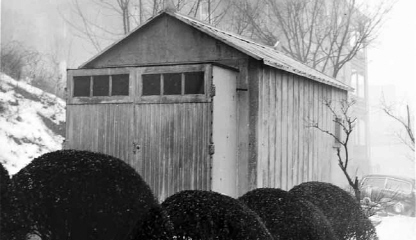
The 10 14 sheet metal and iron garage in which Metesky constructed each of his “units.” One police officer commented that it was “as clean and orderly as a hospital operating room.”
Courtesy Library of Congress, Prints & Photographs Division,
New York World Telegram & Sun
Newspaper Photograph Collection.
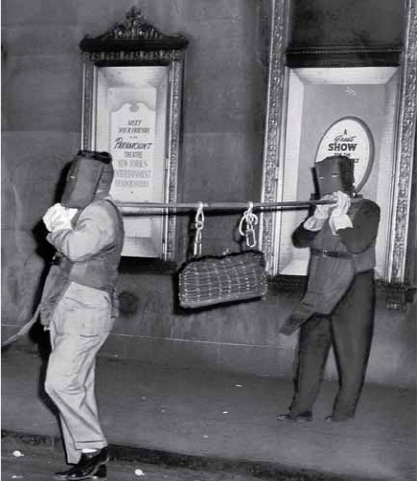
Fully armored bomb squad detectives carefully remove an unexploded pipe bomb from the Paramount Theatre Times Square on December 28, 1956.
Courtesy Library of Congress, Prints & Photographs Division,
New York World Telegram & Sun
Newspaper Photograph Collection.
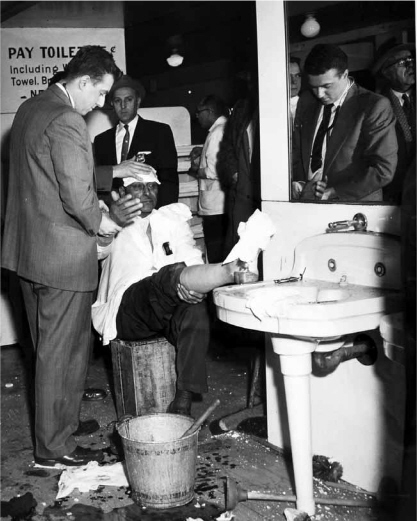
Porter Lloyd Hill receives emergency treatment for his injuries following the February 21, 1956, bombing of Penn Station.
Courtesy Library of Congress, Prints & Photographs Division,
New York World Telegram & Sun
Newspaper Photograph Collection, United Press.
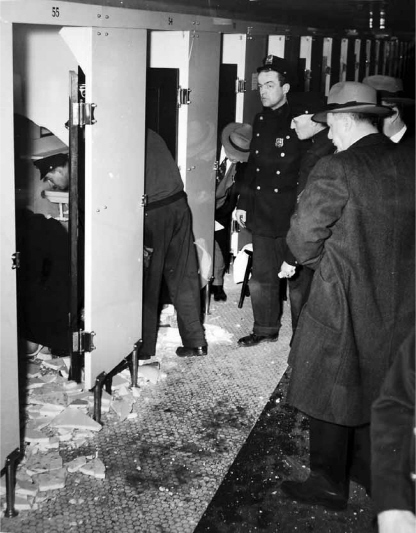
Police detectives gather in the aftermath of a blast in the lower level washroom of Grand Central Terminal on March 16, 1954. The Bomber timed the device to detonate precisely at the start of rush hour.
Courtesy Library of Congress, Prints & Photographs Division,
New York World Telegram & Sun
Newspaper Photograph Collection, United Press.
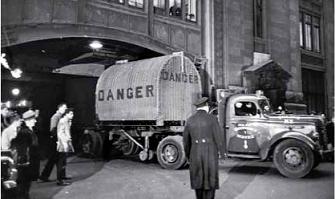
The Pyke-LaGuardia Carrier exits Grand Central Terminal on December 27, 1956, carrying an unexploded pipe bomb. The carrier was fashioned from a fifteen-ton semitrailer flatbed truck outfitted with woven steel cable left over from construction of the Brooklyn Bridge.
Courtesy Library of Congress, Prints & Photographs Division,
New York World Telegram & Sun
Newspaper Photograph Collection, United Press.
